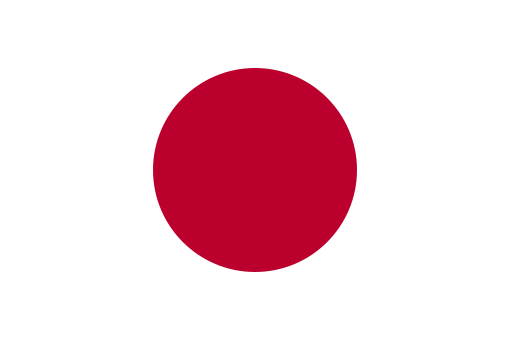Filter:
Level:
Source:
Topic:
The latest news of the day, continuously updated 24h. From official news sources such as CNN, BBC, VOA, Inside Science,...
 2 minute
2 minute RMIT Vietnam hosts Nobel Prize Exhibition and Dialogue 2025
The Embassy of Sweden and RMIT Vietnam co-hosted the Nobel Prize Exhibition and Dialogue 2025 from Sept. 8–19, marking 55 years of Sweden–Vietnam diplomatic ties and 25 years of RMIT in Vietnam. Produced by the Swedish Institute, the exhibition showcased the history of the Nobel Prize and its global impact, offering students and the public new perspectives on innovation and scientific achievement.
The highlight was the Nobel Prize Dialogue on Sept. 15, themed “AI's role in future learning and teaching,” which gathered around 300 participants, including Swedish and Vietnamese officials, international scholars, industry experts, and students. Keynotes from Dr. Gustav Källstrand, Professor Ulf Danielsson, and Professor Virginia Dignum explored the Nobel Prize's legacy, the physics laureate selection process, and the ethical development of artificial intelligence.
A panel featuring experts from Vietnam's digital transformation sector, Ericsson, Tetra Pak, and RMIT discussed how AI is reshaping education, data privacy, digital skills, and cross-sector collaboration. Ambassador Johan Ndisi highlighted Sweden's support for Vietnam's digital transformation under Resolution 57, while RMIT's Deputy Vice-Chancellor Layton Pike emphasized shared values of innovation and excellence.
The event also reflects growing bilateral cooperation, following the June 2025 strategic partnership agreement between Sweden and Vietnam to strengthen collaboration in science, technology, and digital transformation. It aligns with Vietnam's Resolution No. 57-NQ/TW, which prioritizes science and innovation as key drivers of development and envisions Vietnam as a regional AI hub by 2030.
Through this initiative, RMIT reaffirmed its role in fostering educational excellence and university–industry collaboration, while inspiring young people to embrace innovation and contribute to Vietnam's future growth.
Source: TODAII [ 6028] 2025-09-19 07:32:39
6028] 2025-09-19 07:32:39
 1 minute
1 minute Why foreign tourists flocked to Vietnam during the low season
Vietnam recorded unprecedented international arrivals in July (1.56 million) and August (1.68 million), traditionally the low season, surpassing last year's peak months. Tourism agencies nationwide reported inbound bookings rising 15–40% year-on-year.
Key drivers include expanded visa policies: in August, Vietnam waived visas for 12 more European countries, extending the unilateral exemption list to 24 (39 total with bilateral agreements), with stays allowed up to 45 days. Industry insiders say this move, alongside more direct flights from China, South Korea, India, Australia, and to destinations like Phu Quoc and Da Nang, significantly boosted arrivals.
Global factors also worked in Vietnam's favor. Political instability in other Southeast Asian destinations and perceptions of Vietnam as a safe country have drawn more travelers. Meanwhile, extreme summer heat in southern Europe (over 46°C) prompted tourists to seek cooler climates, while shifts in U.S. visa and tariff policies encouraged visitors to choose alternative destinations.
By the first eight months of 2025, Vietnam welcomed 13.9 million international arrivals, up 22% from last year. With momentum building, the country aims to attract 22–23 million tourists in 2025, consolidating its position as one of Southeast Asia's most appealing travel spots.
Source: TODAII [ 2992] 2025-09-19 07:32:29
2992] 2025-09-19 07:32:29
 2 minute
2 minute From humble beginnings to boomtown: Vietnam tourism over 65 years
Vietnam's tourism industry, founded in 1960, has grown from serving mainly foreign delegations under strict controls to becoming Southeast Asia's third most popular destination after Thailand and Malaysia. In its early decades, travel was tightly managed, visas were difficult to obtain, and the market relied heavily on Eastern European visitors. A turning point came in 1994 when the U.S. lifted its embargo, followed by Vietnam's integration into ASEAN, APEC, and the WTO. International arrivals surged from 250,000 in 1990 to 1.35 million in 1995, eventually reaching 18 million in 2019, when tourism contributed over 9% of GDP.
The pandemic halted this momentum, but Vietnam reopened in 2022 with expanded visa policies, including global e-visas and exemptions for 24 countries. These measures fueled a strong recovery, with 17.6 million international arrivals in 2024 and nearly 14 million in the first eight months of 2025. High-profile visitors such as Bill Gates and Mark Zuckerberg, along with global tourism awards, have boosted Vietnam's reputation. Experts project over 60 million visitors by 2030 if growth continues at around 20% annually.
However, challenges remain. Service quality and professionalism are inconsistent, requiring stronger training programs and closer cooperation between schools and businesses. Rapid expansion has also led to overdevelopment, especially in Sa Pa, Phu Quoc, and coastal areas, raising concerns about environmental degradation and the loss of authentic cultural experiences. Despite these issues, Vietnam's tourism has become a bright spot in the economy and is on track to remain a key growth driver.
Source: TODAII [ 880] 2025-09-19 07:32:14
880] 2025-09-19 07:32:14
 2 minute
2 minute The grueling journey through residency for doctors in Vietnam
Residency in Vietnam is considered the most demanding path to becoming a top doctor, open only to the best medical graduates who pass a grueling entrance exam. Hoang Van Chuong, who entered Hanoi Medical University's residency in 2014, studied 720 essay questions across six subjects to qualify. During his three-year program in internal medicine, he endured 24-hour shifts, heavy patient loads, and constant pressure, leading to baldness, exhaustion, and isolation. Despite hardships, he gained expertise that would take others decades.
Life for residents is equally challenging outside work. Chuong's relationship failed due to the workload, while other doctors' spouses described extreme strain, with partners often asleep from exhaustion or shouting orders in their dreams. Female residents like Le Thi Bich Ngoc face the same intensity, balancing grueling schedules and emergency cases with personal sacrifices. She delayed starting a family but described the satisfaction of saving lives, calling residency a transformative test of resilience and skill.
Most residents work from early morning until late at night, with multiple night shifts weekly, no summer breaks, and minimal time off for holidays. Many lose weight, age prematurely, and face constant criticism. Still, they view residency as a meaningful journey shaping them into stronger doctors.
Chuong eventually achieved his dream, moving from Bach Mai Hospital to a private facility for better work-life balance. Quynh's husband, another former resident, now teaches and practices in Thanh Hoa, with Quynh supporting him by running a pharmacy. Both families, after enduring years of sacrifice, now find fulfillment in medicine and family life.
Source: TODAII [ 924] 2025-09-19 07:32:03
924] 2025-09-19 07:32:03
 2 minute
2 minute Rejection of Malaysian ethnic Chinese student with near-perfect score sparks debate on university admission system
Edward Wong, a 20-year-old ethnic Chinese student from Penang, achieved outstanding academic results with a perfect CGPA of 4.0, top co-curricular marks, and high exam scores, yet was rejected from six Malaysian accounting programs, including at Universiti Malaya and Universiti Sains Malaysia. Instead, he was only offered a management course, which he said was not his passion.
The Ministry of Higher Education explained that Wong ranked 1,129th among applicants for a program with only 85 places. His case, highlighted by the Malaysian Chinese Association, sparked debate over racial preferences in admissions. Wong has since received full scholarship offers from MCA-linked universities, Universiti Tunku Abdul Rahman and Tunku Abdul Rahman University of Management and Technology.
Critics argue that an unofficial quota system favors Malay students. Most Malays enter universities through the less demanding matriculation program, where 90% of spots are reserved for them, while many non-Malay students take the more rigorous STPM. A 2023 parliamentary inquiry showed 81% of public university admissions went to Bumiputra students, while minorities shared 19%.
While the ministry insists admissions are merit-based, many see the system as inequitable. The Chinese student group UMANY first called for abolishing matriculation but later suggested integrating it with STPM into a single benchmark system, ensuring fairness while still considering disadvantaged students' needs. The case underscores long-standing debates over Malaysia's race-based education policies.
Source: TODAII [ 880] 2025-09-19 07:31:52
880] 2025-09-19 07:31:52
Read bilingual newspapers by topic
Learn English with Videos










